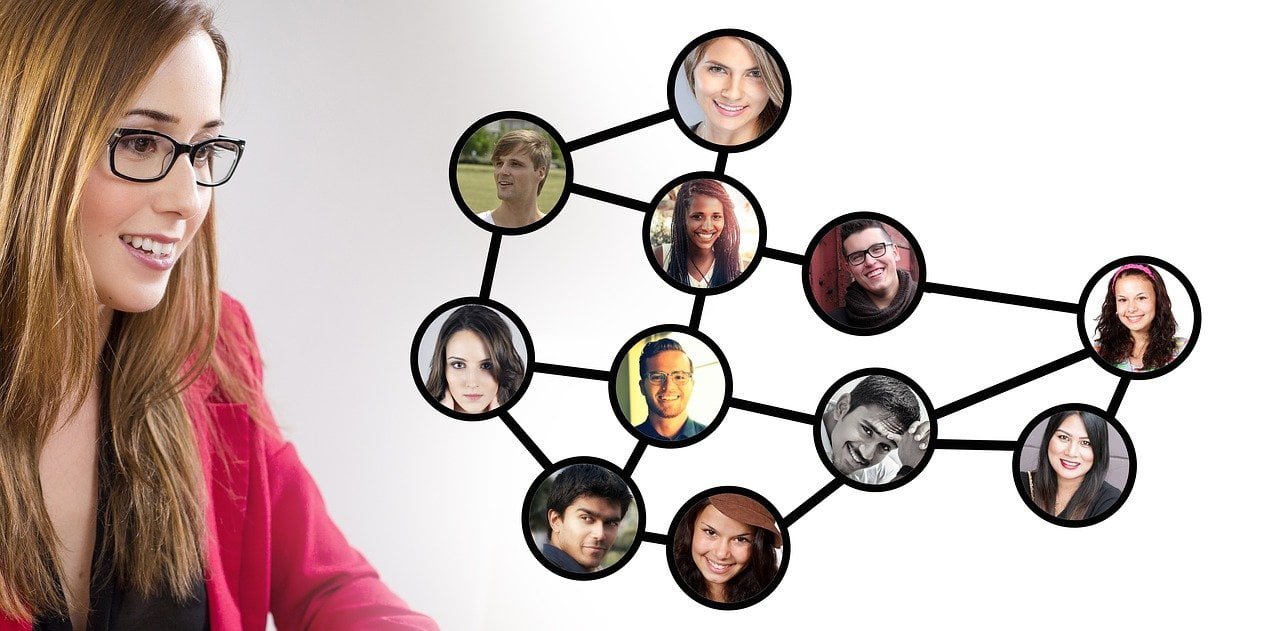
Have you ever noticed how some campaigns you thought would go viral end up flopping, while others that seem insignificant catch fire?
It can feel pretty random at times.
Even marketers who specialize in creating viral content can be surprised when their “surefire” campaign doesn’t go viral despite ticking off all the boxes.
The truth is, creating viral content is both an art and a science.
Once you understand why people share content and incorporate those factors into your campaigns, you significantly increase the chances of your content being shared.
That’s why I’ve put together this guide to reveal the top factors that get people hitting the share buttons like crazy. Here’s what you’ll discover in the pages ahead:
– You’ll uncover the top six needs that drive human behavior in general, especially when it comes to viral campaigns.
– You’ll delve into other essential ingredients necessary for cooking up a successful viral campaign.
– You’ll also explore six real-life referral campaigns that were incredibly successful.
By learning how they achieved their success, you can take a page from their playbooks!
Pretty intriguing stuff, isn’t it?
The Six Surprising Factors That Drive Human Behavior
Humans are driven by six fundamental needs that influence their behavior in every aspect of life.
These needs drive decisions in relationships, work, hobbies, and more, impacting how individuals interact with the world around them.
Interestingly these same six needs also dictate whether someone will share viral content.
The more a piece of content satisfies these needs, the more likely it is to be shared among a wider audience.
The six needs that drive human behavior are as follows:
– Certainty
– Variety (Uncertainty)
– Significance
– Love and Connection
– Growth
– Contribution
However, it’s important to note that each person values these needs differently.
While we all share these basic needs, some may prioritize love and growth, while others value certainty and significance more.
This variance in importance influences the decisions individuals make based on what matters most to them.
To create a successful viral campaign, it’s crucial to incorporate as many of these needs as possible.
By understanding and appealing to these needs, you increase the likelihood of people sharing your content with others.
In this guide, we will explore how to leverage these six core needs to motivate people to share your content.
But before diving into the specifics, it’s essential to have a deeper understanding of how these needs manifest in various areas of life.
Once you grasp the impact of these needs on behavior across different contexts, you can harness them to drive a specific action: content sharing.
Let’s delve into how these needs influence behavior on a broader scale and how you can utilize them to create engaging viral campaigns.
Certainty
The driving force behind seeking certainty is our innate desire for comfort, security and predictability.
When certainty becomes our primary motivator, we tend to choose what is familiar and known over what is unpredictable and unknown.
This preference for certainty can have both positive and negative implications depending on the context.
Let me illustrate how the need for certainty influences our behavior through a few examples:
Example 1:
Consider someone who dislikes their job but decides to remain in that position. This decision is often driven by a desire for certainty.
The reliable paycheck provides a sense of security and reduces stress, outweighing the overall dissatisfaction with the job.
Similarly, individuals who contemplate starting a new business may opt for a job instead due to the perceived security of employment.
The familiarity of a job, even if unsatisfactory, feels safer and more predictable to them.
Example 2:
Have you ever re-watched a movie or sitcom multiple times despite knowing the plot? This behavior stems from the need for certainty.
Sometimes, the familiarity of knowing how a story unfolds offers comfort and relaxation, making it an appealing choice for unwinding.
Example 3:
Remaining in a relationship that no longer serves you, despite recognizing its shortcomings or lack of long-term potential, can also be attributed to the need for certainty.
It may feel easier to stay in a familiar relationship than to venture into the uncertain realm of dating.
Example 4:
Sharing a joke with a close friend is often influenced by the certainty of their reaction.
Understanding what your friend finds humorous allows you to tailor your jokes to their preferences.
For instance, if your friend enjoys attorney jokes, you are likely to share similar humor with them consistently.
These examples highlight how the pursuit of certainty shapes our decisions and behaviors, impacting various aspects of our lives.
This need for certainty can also influence the success of a viral campaign, a topic we will delve into more deeply shortly.
But before we explore that further, let’s examine another one of the six fundamental human needs that drive our actions.
Variety (Uncertainty)
So, I just found out that certainty plays a huge role in shaping behavior. But guess what? UNCERTAINTY has a major impact on how we act.
I know it might sound a bit confusing at first. Let me break it down for you…
While we humans like having some level of certainty in our lives, too much of it can actually lead to boredom.
It can make us restless, and sometimes even push us to do things aren’t great for us (like self-sabotage) just to shake things up a bit.
Here’s the deal…
We humans are drawn to “new” stuff. When we come across something unfamiliar, our brains light up with pleasure.
It’s like a little reward system in our heads that gets triggered by novelty and variety.
That’s why we’re always on the lookout for something new. It’s what drives us, for better or for worse.
Let me give you a few examples to illustrate how variety influences our behavior…
Take the thrill-seekers who dare to enter a haunted house on Halloween. You never know what’s waiting for you around each dark corner. It’s all about the fear and uncertainty that gets those adrenaline junkies going.
Ever watched those prank videos that make you jump out of your skin? The unexpected element is what makes them so shareable.
People love a good scare, and these videos provide just that.
Now, imagine walking away from a great job or a solid relationship.
Others might think you’re crazy for giving up something good, but deep down, you were probably just craving for some excitement and change.
Maybe you tried spicing things up at work by aiming for a promotion or stirring up drama with your colleagues.
Or in your relationship, you might have suggested trying new activities together or even picking fights to shake things up.
Embarking on a spontaneous road trip is another way people embrace uncertainty.
Some meticulously plan every detail, while others prefer to go with the flow and see where the road takes them.
It’s all about seeking out new experiences and breaking free from routine.
And let’s not forget about those controversial conversations we love to stir up on social media.
Whether it’s about religion, politics, or any other touchy subject, we know these topics will ignite a firestorm of comments.
It’s all about injecting some excitement and unpredictability into our lives.
So, as you can see, our desire for variety and uncertainty plays a huge role in motivating our actions.
Stay tuned for more insights on this topic, but first, let’s delve into the next big driver of human behavior…
Significance
Living in a world with over seven billion other people can often make us feel invisible and insignificant. It’s easy get lost in the crowd and wonder if we truly matter.
But deep down, most of us crave a sense of worth, uniqueness, and significance.
This desire to feel special and important is a powerful motivator, guiding our actions and decisions in both positive and negative ways.
Reflecting our lives, we can recall moments when we felt truly significant.
It’s those instances when others acknowledged our achievements and praised us for our efforts.
Whether it’s hearing words like “You did an amazing job” or “I wish I could do that,” these affirmations make us feel valued and exceptional.
And let’s be honest, a little envy from others can also boost our pride and sense of significance.
How does it feel when someone envies you? It’s a validating experience, a confirmation that you’re doing something right and standing out from the crowd.
This recognition fuels our desire to continue being remarkable and distinct in our own ways.
Let me share a few examples of how this need for significance shapes our behaviors:
Consider the journey to getting fit. Many people talk about losing weight and improving their health, but not all stay committed to the process.
Some may start strong, only to revert to old habits and regain lost weight.
Yet, there are those who take fitness seriously, meticulously balancing their diet, engaging in rigorous exercise routines, and sculpting their bodies into extraordinary shapes.
The result? They feel special, unique, and part of an elite group with enviable physiques that set them apart from the rest.
Writing a novel is another example. The mere mention of being a novelist garners admiration and respect, evoking a sense of superiority and significance.
Even the idea of embarking on such a creative endeavor impresses others and boosts our feelings of importance and accomplishment.
Exploring a distinctive hobby is yet another way to stand out.
While many people gravitate towards common pastimes like golfing or painting, taking up a unique and challenging hobby sets you apart.
Whether it’s a hobby that requires rare skills, significant resources, or sheer bravery, sharing it with others elicits awe and admiration, reinforcing your sense of significance and specialness.
Being the trendsetter among your friends also boosts your feeling of significance.
Introducing new and exciting things to your social circle not only brings novelty but also earns you recognition and praise for your ability to discover and share remarkable content.
These examples illustrate how our need for significance can influence our actions and choices.
It’s a powerful force that shapes our behaviors and interactions with others, driving us to seek recognition, validation, and a sense of uniqueness in a world filled with billions of individuals.
Love and Connection
So, we humans are driven by a couple of fundamental needs that shape our behavior.
One of these is significance, which pushes us to seek feelings of superiority, uniqueness, and worthiness.
This quest for significance can sometimes lead us to distance ourselves from others, even though we also crave love and connection.
Our need for love and connection is a powerful force that compels us to form attachments seek approval, and engage in communication.
The fear of loneliness drives us to maintain these connections, as our mental well-being can suffer if we neglect this need.
Let’s look at some real-life examples of how we strive to fulfill our need for love and connection:
Example 1:
When we get married, it’s not just about legalizing a relationship.
Marriage solidifies the bond we share with our partner, providing companionship and support as we navigate life together.
Example 2:
Seeking approval from others is a common way to fulfill our need for love and connection.
However, what is considered the “right thing” varies depending on our social circle.
For instance, joining a gang might involve engaging in illegal activities to gain acceptance within that group.
Example 3:
Pets can also fulfill our need for love and connection. Owning a dog, for example, provides companionship and love that can help satisfy this need.
Example 4:
Sharing content on social media is another way we seek connection and approval.
By posting on platforms like Facebook, we aim to connect with others and receive validation through likes and comments.
In essence, our need for love, connection, and approval is a powerful motivator that influences our behavior in various aspects of life.
Stay tuned for a closer look at how this need impacts our interactions and decisions.
Growth
One of the driving forces behind our actions is the desire for growth.
This encompasses various aspects of our lives, such as intellectual physical, emotional, and spiritual growth. Put simply, we are not fond of remaining stagnant.
Although some may claim to resist change (indicating a lower priority on personal growth), the majority of us feel the urge to evolve in some form.
Let me illustrate how this need for growth serves as a motivational force in our behavior.
Example 1:
Exploring self-discovery.
Whether it involves reflecting on past mistakes and the lessons learned from them or seeking professional counseling to gain an external perspective on our inner workings, self-discovery is a deeply rewarding journey.
By challenging long-held beliefs and embracing change, we experience personal growth in intellectual, emotional, and spiritual dimensions.
Hint: Have you noticed the widespread popularity of self-tracking gadgets like FitBits? This trend is fueled by people’s thirst for knowledge, growth, and transformation.
Example 2:
Satisfying curiosity online.
Picture this: you’re hanging out with friends when a random question pops up, like how birds manage to migrate vast distances without losing their way, or the age-old mystery of how many licks it takes to reach the center of a Tootsie Pop.
Before you know it, everyone has whipped out their phones to Google the answer.
This impulse to seek information online stems from our innate drive for growth, fueled by a curiosity that begs to be satisfied.
Ultimately, there’s immense gratification in learning and expanding our horizons.
Example 3:
Hitting the gym. Have you ever gazed at your reflection one day and felt the need for a physical transformation?
You decide to adopt healthier eating habits, hit the gym regularly, and establish a more active lifestyle.
These changes are often fueled by a desire to enhance our physical well-being – to sculpt the healthiest and fittest version of ourselves.
Example 4:
Immersing in TED Talks. It’s no secret that tuning into a TED Talk guarantees you’ll acquire fresh insights, gain a new perspective, and stretch your mental boundaries.
We watch TED Talks because we crave intellectual growth, and sometimes, even spiritual and emotional enrichment.
In essence, captivating content that promises viewers a chance to broaden their knowledge (even about themselves) is a powerful motivator for engagement.
Contribution
You know, when I think about our basic needs, it’s easy to see how the for growth can sometimes seem a bit self-centered.
It’s all about our own personal development and fulfillment, right? But then there’s this other need – the need for contribution.
It’s like the yin to growth’s yang, focusing more on how we can give to others and make an impact in the world.
And sure, you might think that being all about contribution means you’re some kind of saint, but let’s be real – there’s something in it for us too.
Helping others feels good, plain and simple. It’s like a little reward for our brains, releasing those feel-good chemicals and giving us a warm fuzzy feeling inside.
I mean, think about it – even when we’re doing something good for someone else, we’re still benefiting ourselves in some way. It’s a win-win situation, really.
But here’s the thing – for some people, this need to contribute is so strong that it becomes a make-or-break kind of deal.
Like, imagine hitting that mid-life crisis and feeling like you haven’t really made a meaningful impact on the world.
It’s a wake-up call, a moment of clarity that can really shake you to your core.
Sometimes it’s a need for variety that drives this crisis, other times it’s that burning desire to contribute something of value.
Either way, it’s that nagging feeling that you’re not living up to your full potential, not doing your part to make the world a better place.
So, let me give you some examples to illustrate how this need to contribute can push us to take action…
Example 1:
Teaching someone a new skill.
Whether it’s showing a kid how to tie their shoes or helping adults improve their communication with loved ones, teaching is all about giving back and making a difference.
Example 2:
Volunteering your time.
Whether it’s serving meals at a soup kitchen or coaching a youth sports team, volunteering is a great way to contribute to your community and make a positive impact.
Example 3:
Writing a book to share knowledge.
Putting pen to paper (or fingers to keyboard) to create a book isn’t just about teaching others – it’s about leaving a lasting legacy that will inspire and educate for years to come.
Example 4:
Sharing valuable content online. Every time you hit that share button on a helpful article or post, you’re contributing to the collective knowledge of the internet.
And if it’s something that truly makes a difference, like spreading awareness about human trafficking, then you’re not just making a contribution – you’re making a difference.
So, now that we’ve covered the basics of our core needs and how they drive us to contribute, let’s dive deeper into what makes content go viral…






